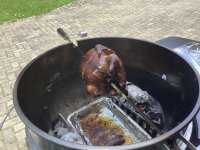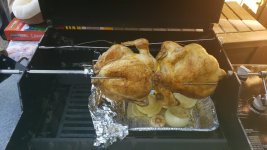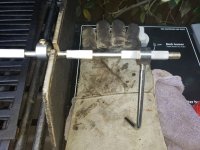Grant Cunningham
TVWBB Pro
At this moment I have a chicken on the rotisserie inside my Genesis 3000. I couldn't get the bird balanced on the spit very well, so there's definitely a slightly heavy side — which means the motor has to work a little harder. (Full disclosure: my rotisserie isn't a Weber — it's an Amazon special: https://www.amazon.com/gp/product/B07CL2LVCW/?tag=tvwb-20 )
Since I'm beginning to really love rotisserie cooking, and plan to do a whole lot more of it, I got to wondering: how many people have managed to wear out or break a rotisserie? Am I tempting fate?
What happens when I go to a turkey instead of a chicken — more weight, faster wear on the motor? Should I invest in a Weber part, or are there even more heavy-duty options out there?
Since I'm beginning to really love rotisserie cooking, and plan to do a whole lot more of it, I got to wondering: how many people have managed to wear out or break a rotisserie? Am I tempting fate?
What happens when I go to a turkey instead of a chicken — more weight, faster wear on the motor? Should I invest in a Weber part, or are there even more heavy-duty options out there?







